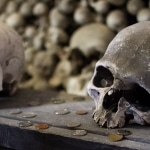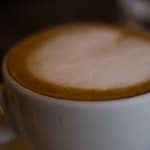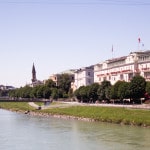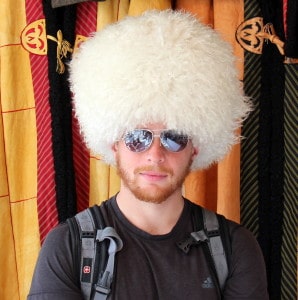Wachau Valley Bike Tour:
Austrian Wines and Crumbling Castles
Vienna is not, on the face of it, Europe’s most active or adventurous destination. My average day in the Imperial City involves exploring lots of traditional coffee houses and the historic Old Town, and only very occasionally something like a bike ride through the city center.
Having the chance to get out of town to spend the day biking along the Danube with two friends and a bunch of awesome strangers, stopping occasionally to ascent an ancient castle or taste the freshest and best white wines the Wachau Valley could produce… how could I POSSIBLY turn that down?!
Being so close, I showed up to Austria on my first trip uninformed and assuming there would be just as much delicious hearty heavy beer in the Österreich as in the German region of Bavaria just a few hours away. Had I been a bit more prepared or even just a touch more observant, of course, I would have seen that while Austria has any number of delicious beers there is a much important alcohol to the Average Austrian: wine.
The Wachau Valley, a short stretch of land along the Danube River between the villages of Krems and Melk, is one of the most renown region for vineyards in all of Austria – even if it only actually accounts for 3% or so of the country’s production. Only about an hour from Vienna by train and dotted with small towns connected mostly by dedicated bike trails, the Wachau Valley is also one of the best places near the capital to explore the different tastes of Austrian wine. With over 100 different wineries located in the valley, there are certainly plenty of tastes and types to choose from.
The largest, a wine co-op called Domäne Wachau, actually accounts for about one third of all the wine produced in the valley. If you’re ever found Wachau Wine anywhere outside of Austria, it was probably through a distributor that carried Domäne. Like much of the Wachau, the Grüner Veltliner grapes make up a majority of Domäne’s vineyards but other white varieties like Neuburger, Rivaner, Pinot Blanc, Chardonnay and Muskateller have a presence as well. There is a very small red wine presence as well but, in reflection of general Austrian tastes for wine, this is a focus of the Wachau wineries.
Being the biggest, Domäne Wachau is also one of the best places to stop and taste a number of the different varieties produced in the Wachau Valley. Especially given that we arrived in a big group of bikers, we had the chance to sample 3 or 4 different bottles: one of which I liked quite a lot and all of which were good.
The taste is only half the equation however. Also important, or at least it seems to be the Austrian mindset to think so, is having somewhere awesome and comfortable and garden-y to drink that wine. And so you leave the classy but sterile domains of Domäne and jump back on a bike or a bus or a rental car (please drink responsibly!) and head to one of the small towns of the Wachau Valley.
As far as I can tell, the German word Heuriger translates roughly to “a small covered garden tucked away on a quiet street where they serve locally sourced wine and delicious home-cooked food in the most amazingly comfortable atmosphere possible” or at any rate something very similar. Our guide for the Wachau Valley bike tour described it as a “tavern that serve their own wine and food”, but he was Dutch so perhaps he missed part of it!
However you properly describe them, the little towns of the Wachau Valley are full of these little heurigen. A destination in themselves, these are actually the public fronts of small private vineyards – as such they usually only sell products produced in-house (as our actually quite knowledgeable guide alluded to in the paragraph above). The longest stop we made at one of these, in the village of Spitz, served a crazy delicious cheese selection and sugar-powdered apricot dumplings in addition to their several varieties of wine. Due to local law/traditions each heuriger is only open for about one month of every three, but local councils manage this in such a way that no matter when you show up to the area there will always be somewhere waiting to welcome you.
Just as much as the wine itself, part of the appeal of a Wachau Valley bike tour is seeing the small moments that feel so different from the city of Vienna so nearby. This is hardly unpeopled land, so don’t show up expecting a solitudinous ride through empty countryside. Rather, consider it a chance to see what life is like in rural Central Europe. Quiet is… perhaps… not always quite the right word.
If you find that you’ve had your fill of fresh wine and delicious food and gently peddling along the side of the Danube, you could always break for an hour or two in the little town of Dürnstein towards the middle of the Wachau. As the legend goes, King Richard the Lionheart of England was imprisoned in the Dürnstein Castle while on his way home from the Holy Land after the Third Crusade in 1192. Richard’s house arrest (which apparently lasted about three months) included the freedom to wander down the steep path from the castle to the town below to try the wines of some of the heurigers. Not the worst way to spend a few months imprisoned, I suppose.
The castle as it exists today is in no fit state for overnight guests, but if you decide you want to make like Richard and hang around for a bit there are also a couple of hotels in Dürnstein that might make for a more comfortable stay. Or, if your bike is getting just a bit too wobbly after too much wine, the Danube Ferry also stops here on the trip from Krems to Melk (the two large towns at either end of the Wachau, both of which have train connections directly to Vienna). No matter which method you choose or how long you take, after a day of drinking and biking and walking and climbing in a beautiful valley of the Danube river you’re bound to feel much more connected to the people and places around you. If so, I know a great brewery back in Vienna to cap your trip!
I was in Vienna in part while working as a photographer with GetYourGuide, including on their Vienna Wachau Valley Winery Bike Tour. If you’re looking to bike and wander on your own, you could easily rent a bike and ride from Krems to Spitz (or further to the abbey at Melk) on your own. If you’re interested in trying Wachau Wines, however, this tour may actually be a fairly good choice for you. Domane Wachau stays open year-round, whereas depending on the season you may have to search in Durnstein and Spitz to see what happens to be open to visitors while you’re there.
I actually visited the Wachau area twice on my list trip to Vienna, first on a Wachau Valley Bus Tour and then later on the Biking/Wine trip. While the Melk Abbey was a nice stop and ferry rides are always nice, being on a bike and making frequent stops in beautiful little towns was a MUCH better experience than seeing them fly by out the window of a tour bus. If you’re trying to decide between the two, stick to the bikes!





















loved this one
Thank ya! It was a good day, though I was worried about the light for the first few hours. Luckily by late afternoon it cleared up and the sun came out and made for some decent photos as well.
I thought you are in Prague.
Do you travel at the speed of light??????
I saw your Vienna series pictures in FB.
You said you were not in there anymore.
Are you still doing photographing there?
Ha… I move pretty quickly when I’m working, usually. I was in Vienna for about two weeks and Prague for one, then a day in Istanbul. Now I’m back home in Kyrgyzstan getting ready for a couple of big festivals here over the next three weeks!
This is great! I grew up in Vienna and haven’t been here yet, silly me. I’m staying till mid September but am on antibiotics and can’t drink. We’ll see what happens but I’d love to visit now! 🙂 Shame you’re not around anymore – I could show you around Vienna!
Ah, bummer. Even if you can’t stop off at the wineries, the valley itself is nice and definitely worth a day or two of biking. Agreed, I wish I’d found your site a bit earlier and we could have met up. I seem to pass through Vienna about once a year, though, so perhaps out paths through the city will cross at some point.